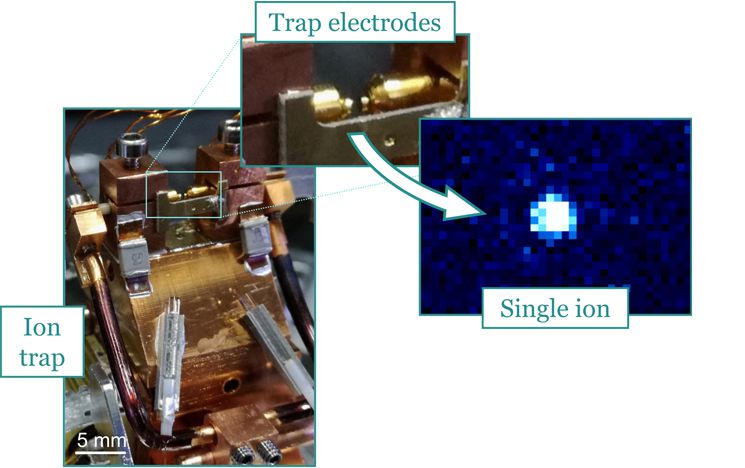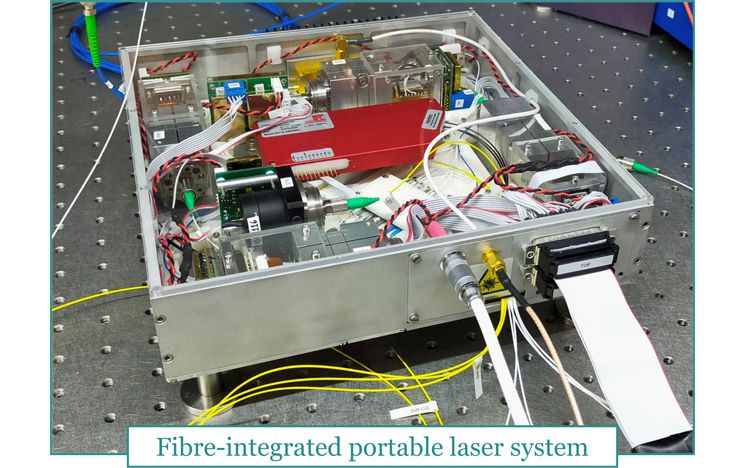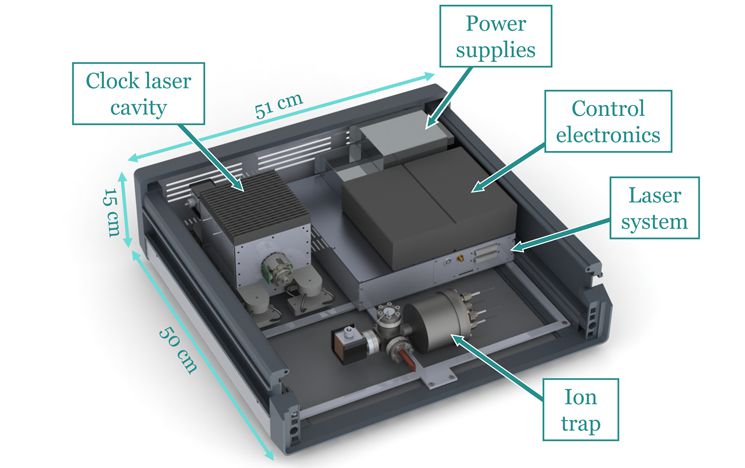Portable Optical Atomic Clocks
Optical atomic clocks are the most accurate time-keeping instruments to date. Cutting edge systems being developed in metrology laboratories have shown accuracies of just a few parts in 10-18, which for comparison corresponds to a shift of about one second over the age of the universe. Devices with such a level of precision are very attractive in many areas, such as data transfer and telecommunications, geolocation networks like GPS and GNSS, earth observation measurements such as geodesy and the understanding of underground materials, as well as the advancement of fundamental physics.
Commercial portable atomic clock solutions exist, but they are based on microwave transitions (usually in caesium or rubidium atoms), which limits their ultimate accuracy and stability levels. In contrast, atomic clocks based on optical transitions offer much greater performances but, up until now, they have mostly been confined to highly specialised research laboratories. Recently, transportable optical atomic clocks have started to appear, but these are still bulky, complex and power hungry systems, requiring the attention of highly skilled operators in order to function, and occupying several cubic meters of space.

At ITCM, with the collaboration of our scientific and industrial partners, we are developing a highly compact and autonomous optical atomic clock based on a single calcium ion. The device is to fit in a 4-unit 19-inch rack module (50x51x15 cm), weighing under 20 kg and with a target power consumption below 100 W. The expected fractional uncertainty is on the order of 10-16: around three orders of magnitude better than commercially available microwave atomic clocks with a similar form factor, and two orders of magnitude better than the higher performance commercially available portable systems, which are ten times the size.

Such a miniaturisation effort is made possible by exploiting the latest advances in fibre optic components, as well as semiconductor diode lasers. By substituting free-space optical components by their fibre-coupled counterparts not only can we make the system significantly more compact, but also inherently more simple, stable and resilient to environmental changes.
The final goal of this project is to develop a device that can readily be commercialised, and so we put great effort in keeping our design and test and assembly processes friendly towards a manufacturing setting.
